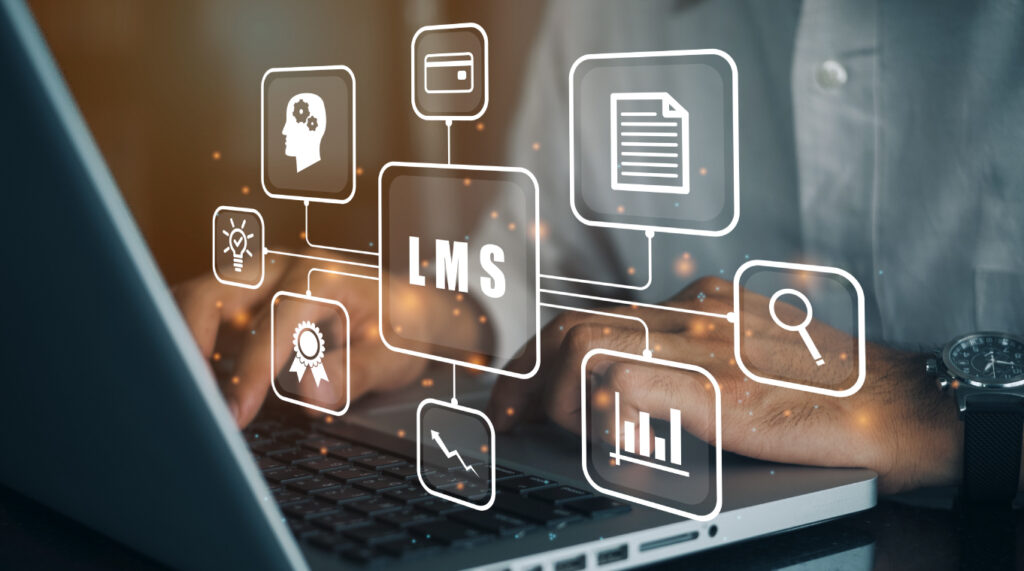Why an LMS System is Essential for Modern Education and Corporate Training

In today’s digital-first world, Learning Management Systems (LMS) have become a game-changer for both educational institutions and businesses. Whether you’re a university, a training provider, or a company looking to upskill employees, an LMS streamlines learning, increases engagement, and improves overall efficiency.
If you’re still relying on outdated methods for training and development, it’s time to explore how an LMS can revolutionize your approach to learning. Let’s dive into the benefits, LMS options, and how Maceforce can help set up the perfect LMS solution for you.
Why Your Business or Institution Needs an LMS
A Learning Management System (LMS) is more than just a software platform; it’s a complete ecosystem that brings structured, data-driven learning to your organization. Here’s why it’s essential:
✅ Centralized Learning Hub
Say goodbye to scattered PDFs, emails, and outdated manuals. An LMS provides a single platform to store all learning materials, making access seamless for students, employees, or corporate trainees.
📊 Performance Tracking & Reporting
Monitor learning progress, track engagement, and get real-time insights on course completion, test scores, and knowledge gaps—allowing for data-driven decision-making.
💰 Cost-Effective & Scalable
Traditional classroom-based training can be expensive and difficult to scale. An LMS reduces costs related to travel, printed materials, and instructor fees, while making training accessible anytime, anywhere.
🎯 Personalized & Adaptive Learning
Modern LMS platforms offer AI-powered personalized learning paths, ensuring every learner progresses at their own pace. Employees and students get targeted training based on their needs.
🌍 Global Accessibility
With remote work and hybrid learning becoming the norm, an LMS allows training across geographies, ensuring seamless education and skill-building for diverse teams.
Which LMS Should You Choose?
With countless LMS solutions available, selecting the right one depends on your specific needs. Here are some top options:
🎓 Education-Focused LMS
- Moodle – Free & open-source, great for universities and schools.
- Canvas – User-friendly with great support for higher education.
- Google Classroom – Simple and cloud-based for remote learning.
🏢 Corporate Training LMS
- TalentLMS – Ideal for businesses that want an easy-to-use solution.
- Docebo – AI-powered LMS for enterprises with large teams.
- SAP Litmos – Built for compliance training and global organizations.
🔧 Customizable & Enterprise LMS
- Blackboard – Best for businesses and institutions requiring deep customization.
- Cornerstone OnDemand – Enterprise-grade LMS with strong HR & compliance integration.
- LearnDash – Great for WordPress-based eLearning businesses.
Not sure which LMS fits your needs? Maceforce helps you choose, customize, and deploy the best LMS tailored to your industry!
Steps to Implementing an LMS with Maceforce
At Maceforce, we specialize in LMS setup, customization, and deployment—ensuring a seamless transition to digital learning and training.
🔹 Step 1: Understand Your Needs – We analyze your training goals, target audience, and budget to recommend the best LMS.
🔹 Step 2: Select & Customize – Our team helps configure the LMS, branding it to match your organization’s identity while ensuring smooth system integration.
🔹 Step 3: Content Migration & Optimization – We assist in transferring existing materials and creating engaging, structured courses.
🔹 Step 4: Training & Onboarding – Our experts train your staff and learners to ensure maximum engagement and adoption.
🔹 Step 5: Ongoing Support & Maintenance – We provide continuous updates, troubleshooting, and feature enhancements to keep your LMS running at peak performance.
Ready to make the switch? Maceforce takes the complexity out of LMS setup, so you can focus on what truly matters—delivering knowledge effectively!
Let's Get Started – Transform Your Learning Today!
Whether you’re an educational institution, a corporate training team, or an independent educator, an LMS can streamline your learning process, improve engagement, and boost retention rates.
💡 Need expert guidance? Maceforce is here to help! Let’s build a powerful, scalable LMS tailored to your needs.
📞 Schedule a Free Consultation Now → Contact Us
📢 Make learning smarter, faster, and more engaging!